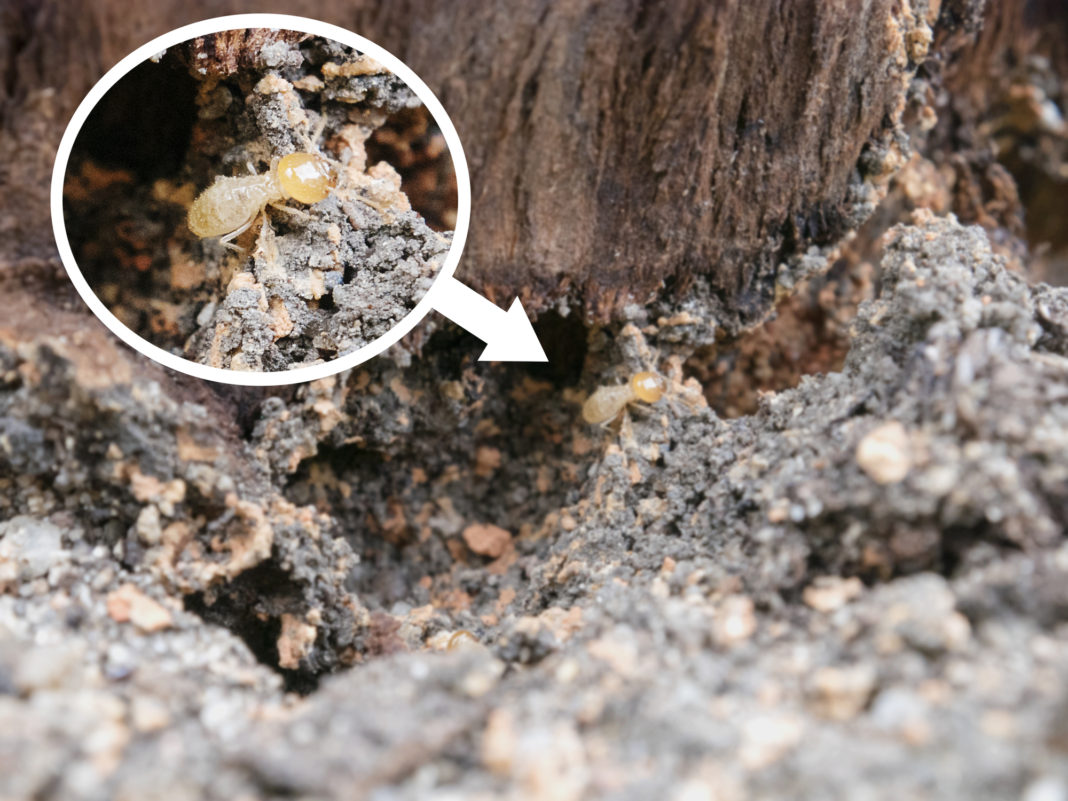Termites are bad news.
We’ve all heard of people who lost their home, their childhood memories, book or art collections, and all sorts of sentimental treasures to termites. These situations occur because termites indiscriminately eat through wood and timber, paper, cardboard, and anything else that contains cellulose and other nutrients they need.
Too often, as well, people discover the extent of termite-induced structural damage in their property a little too late. Not only must you invest a substantial amount of money to restore structural integrity in your home (insurance doesn’t normally cover termite damage), but also you’ll experience heartbreak when you discover that the childhood mementoes you carefully stored away have all been eaten away.
This terrible scenario can be avoided if you know what signs to look out for when it comes to termites. To help you with this, enumerated below are ways to spot evidence of a termite infestation:
- Flying termites or white ants
‘Swarmers’ or ‘alates’ are the terms used to refer to male and female termites that fly around in search of mates and a new place to settle in – that could be your home or neighbourhood! Drywood termites are known to fly around after the rain, although there are species that are attracted to light sources and swarm around at night.
Another thing to take note of is sightings of ‘white ants’. There is no such thing as a white ant, so if you spot something like it, be alert. You may already have a termite infestation in your property.
- Hollow-sounding or papery timber
A sure sign that termites have already begun eating away into the wood is the sound of hollow wood. You can try gently knocking on wooden structures and listen for a hollow sound. Usually, if the damage is quite advanced, you’ll see wood dust falling as you knock on the wood.
- Wood tunnels
These ‘galleries’ or tunnels in termite-damaged wood can be difficult to detect. Termites are usually clever enough to leave wood surfaces intact, so you never know for sure what’s going on underneath it. What you can do is to be on the alert if you stumble upon a piece of broken timber in your house or property. Look it over carefully since the broken piece of wood should already reveal termite damage.
- Warping of doors and windows
Although stiff windows and warped doors can be caused by moisture and hot weather, the same can also indicate a termite invasion. Since termites produce moisture as they tunnel through and eat the wood, they can also cause the wood to warp. This can lead to difficulty with opening doors and windows. Be sure to note this if you suspect a termite infestation in your place.
Related to this would be sagging floors. Since termites damage the structural integrity of the wood, get your home inspected by a termite expert if your floors have begun to sag for no apparent reason.
- Termite droppings or frass
If you have a drywood termite infestation, you’ll find tiny black marks and a dark powder-like substance in the area that’s infested. This is because drywood termites don’t make use of faecal matter to build their tunnels – unlike their subterranean cousins.
What to do if you suspect a termite infestation
Whether you find all these signs or actually stumble upon a termite nest or mound in your property, do not attempt to disturb anything. If you disturb the termites, all they will do is move away and set up shop in another property.
What you need to do is to call in a licenced and qualified pest control manager. They will do a thorough property inspection to determine the extent of termite damage. They will also devise a termite management plan to ensure you get rid of these troublesome pests once and for all.

















Truly this post gave me some strong points to consider. This is a great help to spot termites. If you want to hire professional pest control service then please click on this website.